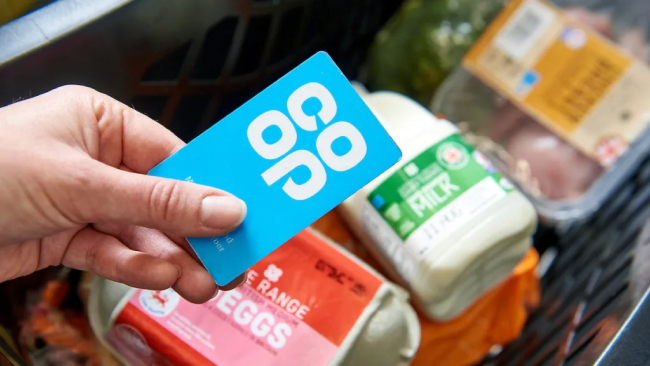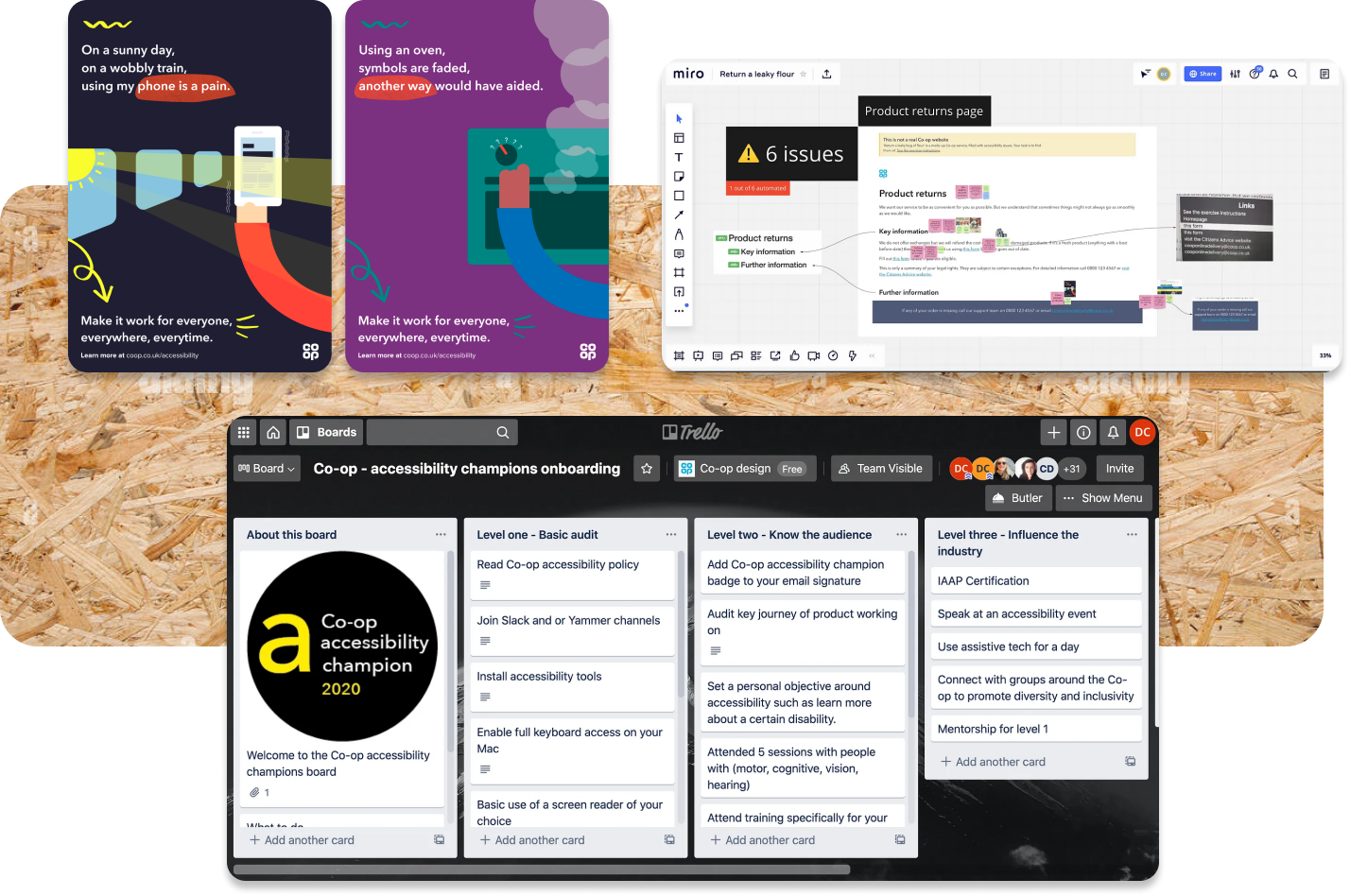Co-op Digital team
How I made accessibility stick in a large org
Design Operations
Accessibility
System Thinking
2021

The challenge
Established in 1844, Co-op has always valued people. However, with 3,500 employees in its headquarters and 16 active multidisciplinary digital teams working on numerous programs, accessibility can easily be overlooked in the millions of decisions made annually.
My task was to help designers produce their best work. A cornerstone of this was making accessibility the default.
Accessibility had been lost in some teams.
“Dave, nobody is talking about accessibility in our team.”
Front end developer
Understanding the challenge
Working with a researcher we interviewed, surveyed and ran automated accessibility tests across many teams. It became clear there were 3 core areas to look at:
Awareness – people weren’t aware of accessibility or how it related to their service or product.
Process – teams couldn’t practically apply accessibility to their current workflows.
Communication – how can we make sure accessibility is being talked about throughout Co-op not just now, but in 5 years?
Raising awareness
I ran workshops with multiple teams to show in simple terms what accessibly was and recruited advocates to create momentum.
- I created an accessibility champions network with levels of progression and self-onboarding.
- With our content team, I created posters to make accessibility more relatable.
- I designed a pay-it-forward training session called “Return a leaky flour bag” where people experienced accessibility issues. Attendees then delivered the sessions to their teams.

Process
I led workshops to learn more about our ways of working with QAs, Designers, Front-end, Delivery, and Product. To learn what was stopping accessibility from being done, I found:
- QAs didn’t have the tools and knowledge to test using assistive tech.
- Researchers struggled to include disabled people in their work.
- Front-enders weren’t using automated or keyboard testing.
- Nobody was sure which standards we adhered to.

Removing barriers in everyday work
To make accessibility stick it needed to feel like it was part of the work and not an additional thing. I worked on removing common barriers by:
- Co-creating an accessibility policy with people from each discipline. To show intent and accountability by discipline to empower people to include accessibility in their work.
- Writing a Co-op plain English accessibility standards with content designers which gave clarity to suppliers and teams.
- Co-created a critical accessibility testing framework and dashboard with our design system team to test components.
- I procured Fable’s services services to facilitate early and frequent testing with disabled users.
“Dave found strategies to land the core message using techniques that would make a large business notice, risk, real-world situations”
Matt Tyas, Head of Design
Outcomes
Accessibility outcomes:
- Co-op is independently ranked no 1 for accessibility for UK supermarkets.
- Estimated saving of £250k and rising daily on training and bug fixes earlier in the process.
- Accessibility is confidently and regularly discussed in many meetings.
- 100s of people trained to apply accessibility in their everyday work with the tools to teach others.
